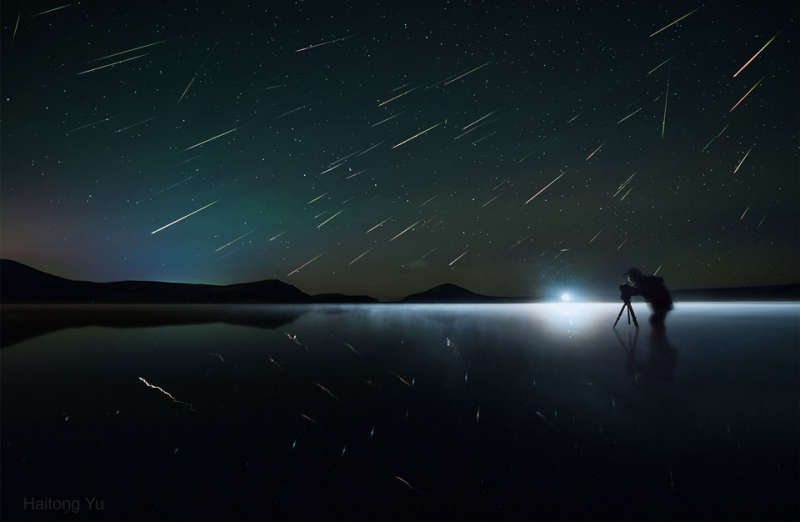Credit & Copyright: Haitong Yu
Explanation:
Did you ever get caught in a meteor shower?
If yes, then every minute or so the sky sparked with fleeting flashes of light.
This was the fate of the pictured astrophotographer during last year's Perseids
meteor shower.
During the featured three-hour image composite,
about 90 Perseids rained down above Lake Duolun of
Inner Mongolia,
China.
If you trace back the meteor streaks, you will find that most of them
appear to radiate from a single constellation -- in this
case
Perseus.
In fact, you can even tell which meteors are not
Perseids because they track differently.
Tonight promises to be another good night to get caught in a meteor shower because
it is the peak for the Geminids.
Gemini, the shower radiant,
should rise shortly after sunset and
be
visible most of the night.
Free APOD Lectures:
January 5 in NYC & January 9 in DC
1999 2000 2001 2002 2003 2004 2005 2006 2007 2008 2009 2010 2011 2012 2013 2014 2015 2016 2017 2018 2019 2020 2021 2022 2023 2024 2025 |
Yanvar' Fevral' Mart Aprel' Mai Iyun' Iyul' Avgust Sentyabr' Oktyabr' Noyabr' Dekabr' |
NASA Web Site Statements, Warnings, and Disclaimers
NASA Official: Jay Norris. Specific rights apply.
A service of: LHEA at NASA / GSFC
& Michigan Tech. U.
|
Publikacii s klyuchevymi slovami:
meteor shower - Perseids - Meteornyi potok - Perseidy
Publikacii so slovami: meteor shower - Perseids - Meteornyi potok - Perseidy | |
Sm. takzhe:
Vse publikacii na tu zhe temu >> | |
